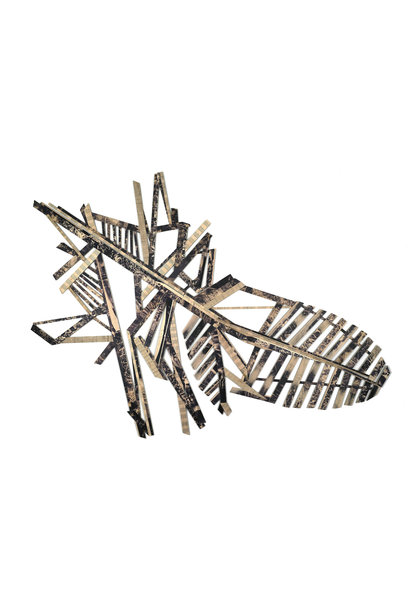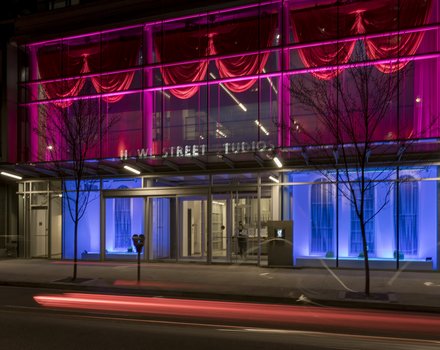

Patrick Mahon “Submersible (Hogarth)”, Patrick Mahon
C$ 0.00 Excl. tax
- File number: EXHI1036
...
The works in Submersible (Hogarth) continue Patrick Mahon’s artistic investigation of built structures, decorative motifs, analytical patterns, and historical tropes that reference human connections within shifting social and environmental conditions.
Mahon’s newest pieces depict fragile towers, vessels, and other architectural forms in malleable arrangements that allude to the complexity of the relationship between people and nature. Shipwrecks are used in this exhibition as a contemporary warning, amongst other possible references, of the potentially harmful affects of climate change.
William Hogarth, referenced in the title of this exhibition, was an eighteenth century English painter, printmaker, pictorial satirist, social critic, and editorial cartoonist. He was perhaps best known for picturing realistic sequences of characters performing loathsome acts and then being subject to ill-fated diseases and death. Mahon references Hogarth as a way to reinforce the reading of his shipwrecks as potential symbols of social and environmental critique.
Shipwrecks can be found in many places around Vancouver. The West Coast Trail, which is now a 75km backpacking route on Vancouver Island, was originally built to facilitate the rescue of survivors of shipwrecks along the treacherous Graveyard of the Pacific. The current debate over the potential affects of increased oil tanker traffic on the west coast comes to mind when viewing this exhibition.
Mahon’s work is not literal or obvious in referencing the politics of the resource extraction industry, rather, it presents a subtle metaphorical narrative through a variety of media and forms. The exhibition features two wall sculptures, a video, and five digital photographs.
Submersible (Hogarth) #1 and #2 could be described as relief printed wall-sculpture meets stick-drawing. Graphic details from Hogarth’s socially critical engravings are printed onto sheets of pine and then cut up into long skinny sticks that are reassembled into the shape of broken semiabstract hulks.
In Hogarth (Submersible), Mahon printed scenes from Hogarth’s etchings onto vinyl and submersed it in water. Underwater handheld video footage of the etchings are captured with the movement of the water acting as a lens through which to view the historical scenes. Ripples of water and reflections of light interrupt the viewing, obscuring certain details as the camera zooms in and out.
Shipwreck Study #1 to #5 picture other small-scale silkscreened vessels marooned or afloat on top of digital prints of ice, clouds, and snow. The vessels appear to be caught within suspended or uncertain moments.
This exhibition continues Mahon’s invocation of the historical potential of graphic art to mobilize critical rhetoric and overt protest through printed visual language. Water and Tower Allegory, shown recently at Gallery 1C03 at the University of Winnipeg, features printed wall sculptures based on images of water towers and coal mining tipples.
Voyager, presented at McMaster Museum of Art in 2013, involved the presentation of works from the collection of the Museum—primarily prints by Durer and Hogarth—combined with Mahon’s graphic wall sculptures.
In all of these works, Mahon’s highly embellished structures appear to operate according to a Benjaminian notion of allegory. They are critical vessels suspended between destruction and becoming; baroque objects that appear as ruins embodying a past while proposing the possibility of a future—if a potentially fragmentary one.
Curated by Justin Muir
Patrick Mahon is an artist, curator, teacher, and academic based in London, Ontario. He is represented by Katzman Contemporary in Toronto. He has been a faculty member at Western University since 1995.
Mahon has exhibited in Canada at McMaster Museum of Art, Robert Langen Gallery at Wilfred Laurier University, Gallery 1C03 at the University of Winnipeg, Museum London, Art Gallery of Hamilton, Southern Alberta Art Gallery, and Kamloops Art Gallery, and internationally at the Sichuan Fine Arts Institute in Chongqing, China, and at Barthète in Toulouse, France.
He has participated in residencies at the International Studio and Curatorial Program in New York, the Frans Masereel Centrum in Belgium, and La Maison Patrimoniale Barthète in France.
A catalogue entitled Water Structures with an interview by Robert Enright is forthcoming.
Recently viewed
-
 Favoriten
Add to cart
Favoriten
Add to cart
Patrick Mahon “Submersible (Hogarth)”, Patrick Mahon
C$ 0.00 Excl. tax


